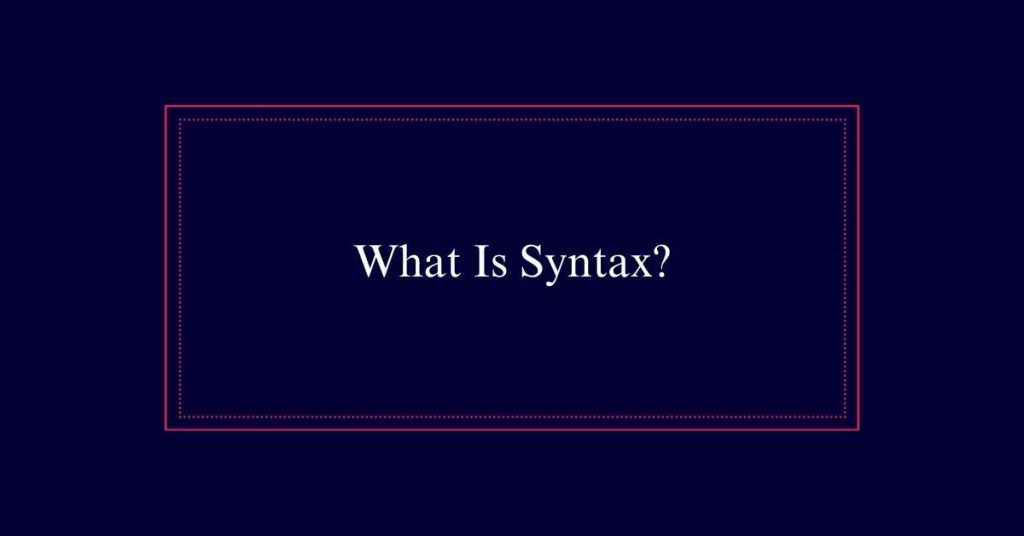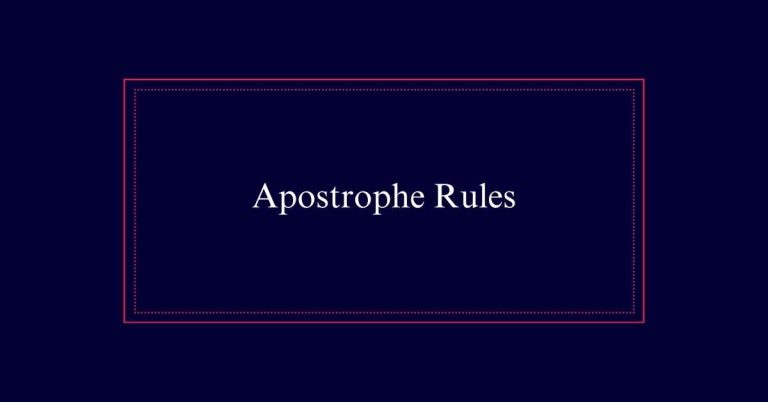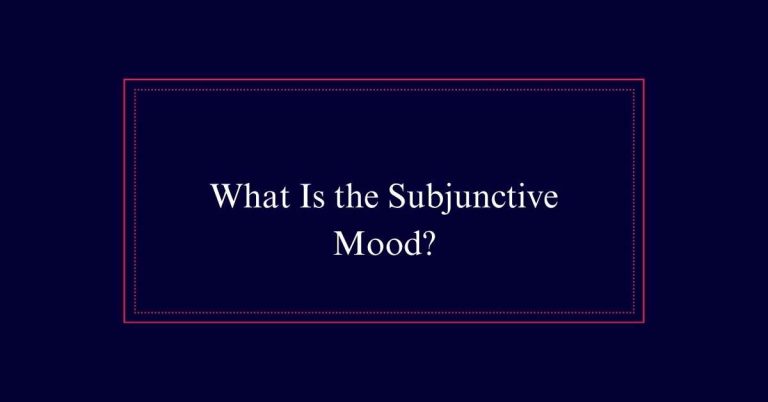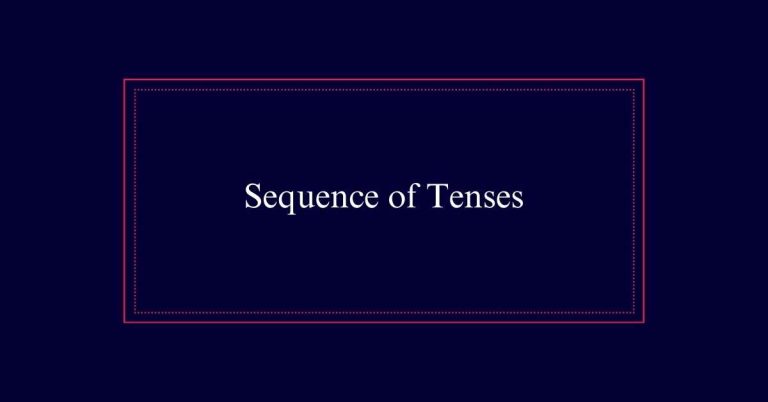What Is Syntax?
Syntax is the arrangement of words and phrases to create well-formed sentences in a language. It dictates the order of subjects, verbs, and objects to convey clear meanings. Correct syntax plays a vital role in governing sentence structures, such as subject-verb agreement and the positioning of adjectives and adverbs, to facilitate proper communication. For example, ‘The quick brown fox jumps over the lazy dog’ follows proper syntax.
Definition of Syntax
Syntax is the set of rules that governs the structure of sentences in a language. It determines how words are combined to form meaningful sentences. Syntax includes principles such as the requirement for sentences to have a subject and a verb.
The subject typically precedes the verb, and objects follow the verb. Additionally, adjectives and adverbs usually come before the words they modify. Syntax also encompasses the use of subordinate clauses, which need both a subject and a verb.
Importance of Word Order
Understanding the structure of sentences naturally leads to appreciating the importance of word order. In English, word order is essential for conveying the correct meaning.
For instance, ‘The cat chased the dog’ differs greatly from ‘The dog chased the cat.’ The subject, verb, and object must be in the right sequence to make sense. Incorrect word order can cause confusion or even a complete change in meaning.
In addition, word order affects emphasis and readability. Placing important information early in a sentence can grab attention, while varied word order can create rhythm and interest in writing.
Basic Grammar Rules
Mastering basic grammar rules is essential for constructing clear and effective sentences. These rules form the foundation of syntax.
Every sentence must include a subject and a verb to convey a complete thought. Typically, the subject comes before the verb, and if there is an object, it follows the verb. Adjectives and adverbs should precede the words they modify. Subordinate clauses also need their own subject and verb. Ensuring these elements are correctly placed helps maintain clarity and meaning.
Constituency in Sentences
Building on the foundation of basic grammar rules, it is important to explore how words group together to form constituents within sentences.
Constituents are word clusters that function as single units. They can be phrases like noun phrases, verb phrases, and prepositional phrases.
For example, in the sentence ‘The quick brown fox jumps over the lazy dog,’ ‘the quick brown fox’ is a noun phrase, and ‘jumps over the lazy dog’ is a verb phrase.

Essential Sentence Components
Essential sentence components include the subject, verb, and often an object or complement. These elements form the core structure needed to convey clear meaning. The subject is the doer of the action. The verb represents the action or state of being. An object or complement provides additional information about the action or subject. Understanding these components is important for constructing grammatically correct sentences. The table below outlines these essential components with examples.
| Component | Definition | Example |
|---|---|---|
| Subject | The doer of the action | The cat |
| Verb | The action or state of being | sleeps |
| Object | Receives the action | the ball |
| Complement | Provides more information | is happy |
Common Syntax Patterns
Common syntax patterns serve as fundamental structures that guide the arrangement of words in sentences. These patterns help guarantee clarity and coherence in communication.
Here are four common syntax patterns:
- Subject → Verb (S → V): ‘She runs.’
- Subject → Verb → Direct Object (S → V → DO): ‘He reads books.’
- Subject → Verb → Subject Complement (S → V → SC): ‘The sky is blue.’
- Subject → Verb → Adverbial Complement (S → V → AC): ‘They arrived late.’
Sentence Structures Explained
Understanding sentence structures is essential for mastering syntax and effective communication. Sentences can be classified into four main types: simple, compound, complex, and compound-complex. A simple sentence has one independent clause. It expresses a complete thought.
A compound sentence contains two or more independent clauses joined by a conjunction. A complex sentence includes one independent clause and at least one dependent clause. A compound-complex sentence combines elements of both compound and complex sentences, containing multiple independent clauses and at least one dependent clause.
Literary Uses of Syntax
Skilled writers leverage syntax to enhance the depth and impact of their literary works. They strategically arrange words and phrases to create rhythm, emphasis, and nuance. This intentional manipulation of syntax can evoke emotions, build tension, and shape readers’ interpretations.
Here are four ways writers use syntax in literature:
- Parallelism: Repeating structures to create a harmonious effect.
- Inversion: Reversing standard word order for emphasis or to create a specific tone.
- Juxtaposition: Placing contrasting ideas close together to highlight differences.
- Ellipsis: Omitting words for conciseness or to invite readers to fill in the gaps.
Syntax in Famous Works
In famous literary works, authors deftly manipulate syntax to enhance storytelling and convey deeper meanings. This skillful syntax use allows writers to evoke emotions, build tension, and craft memorable scenes. For example, Charles Dickens’s elaborate sentences create a rhythmic and vivid narrative, while Ernest Hemingway’s terse syntax delivers direct and powerful prose. Below, we highlight how syntax varies in their works:
| Author | Syntax Style |
|---|---|
| Charles Dickens | Complex, detailed |
| Ernest Hemingway | Simple, direct |
| William Faulkner | Stream-of-consciousness |
| Jane Austen | Balanced, structured |
How Does Syntax Relate to the Concept of Distributives?
Syntax in linguistics concept refers to the arrangement and order of words within a sentence. When it comes to distributives in linguistics concept, syntax plays a crucial role in determining how these words are structured in a sentence to convey the intended meaning effectively.
Applying Syntax Effectively
Mastering the application of syntax can elevate both written and spoken communication by ensuring clarity and impact. Effective syntax use involves arranging words and phrases to convey precise meaning while engaging the audience.
Here are four key strategies for applying syntax effectively:
- Variety in Sentence Structure: Mix simple, compound, and complex sentences to maintain reader interest.
- Active Voice: Use active voice over passive voice for more direct and dynamic sentences.
- Punctuation: Employ punctuation marks like commas and semicolons to clarify relationships between ideas.
- Conciseness: Eliminate unnecessary words to enhance readability and focus.






